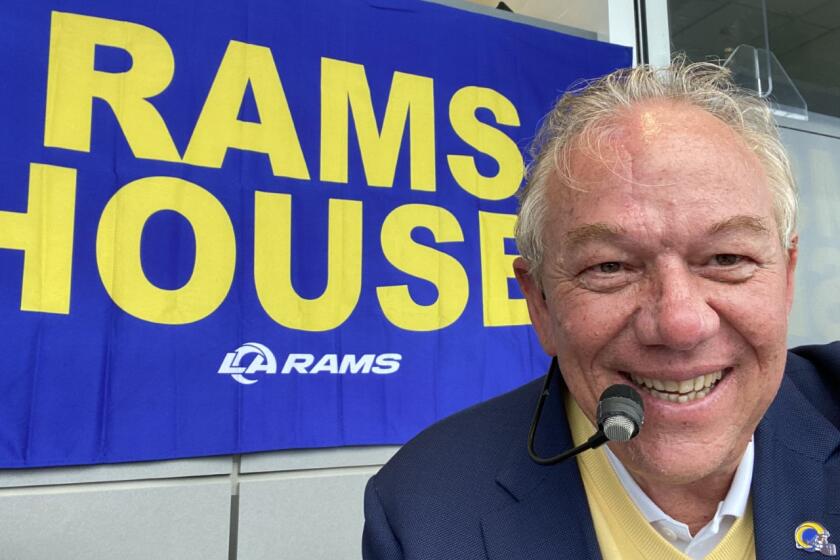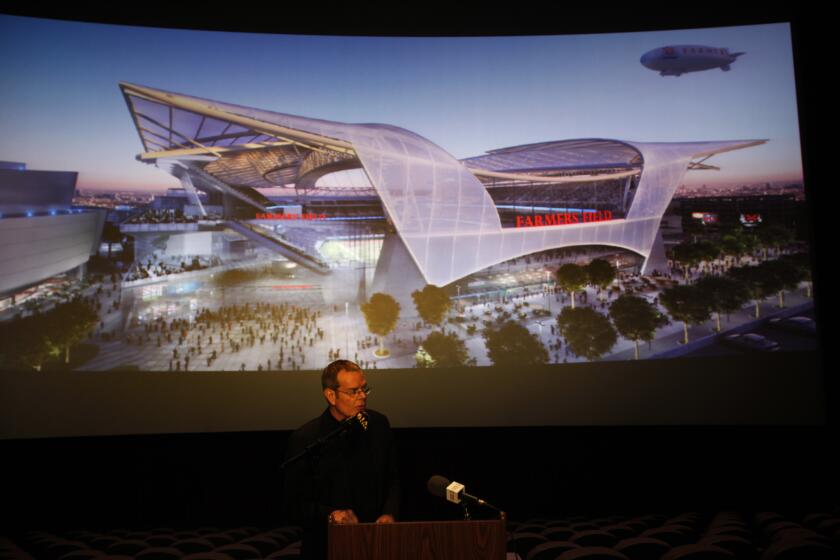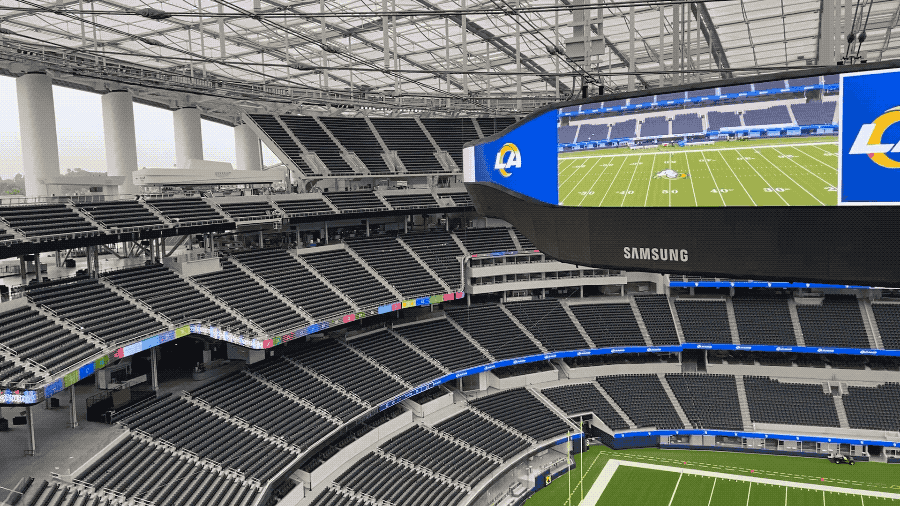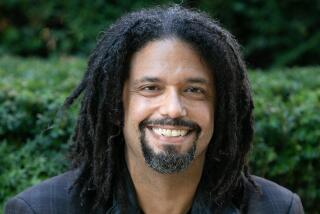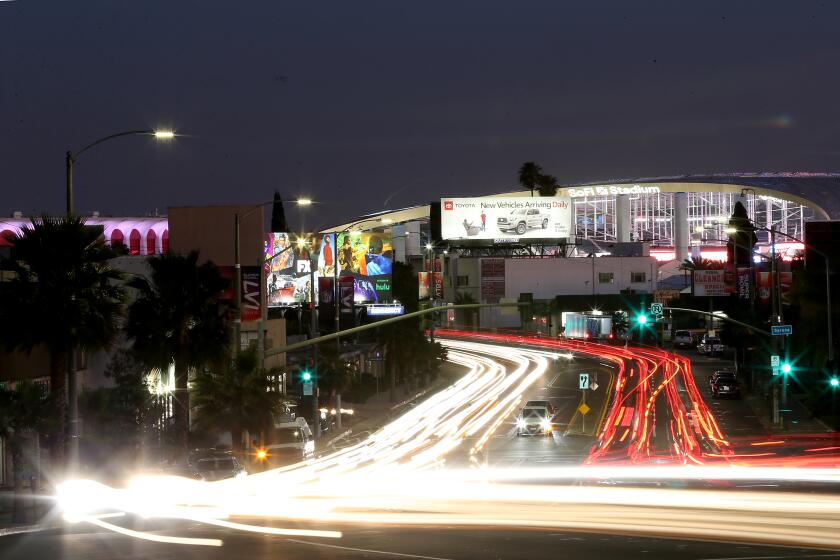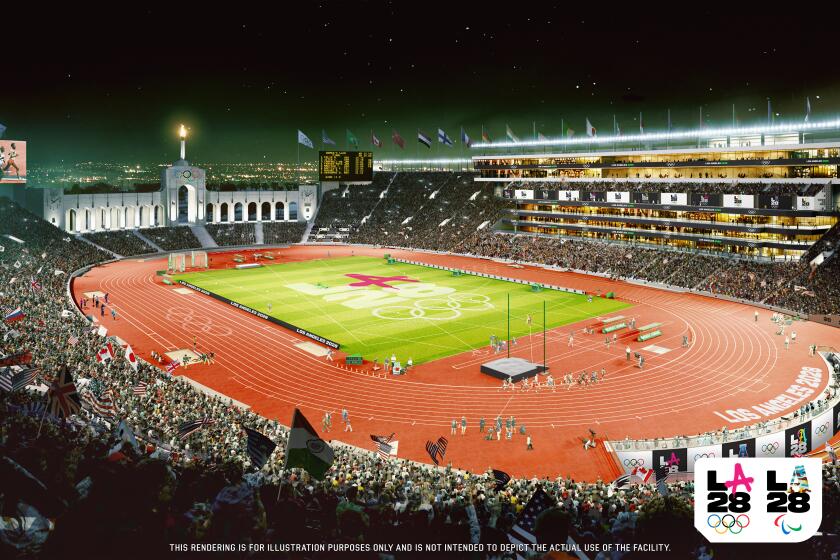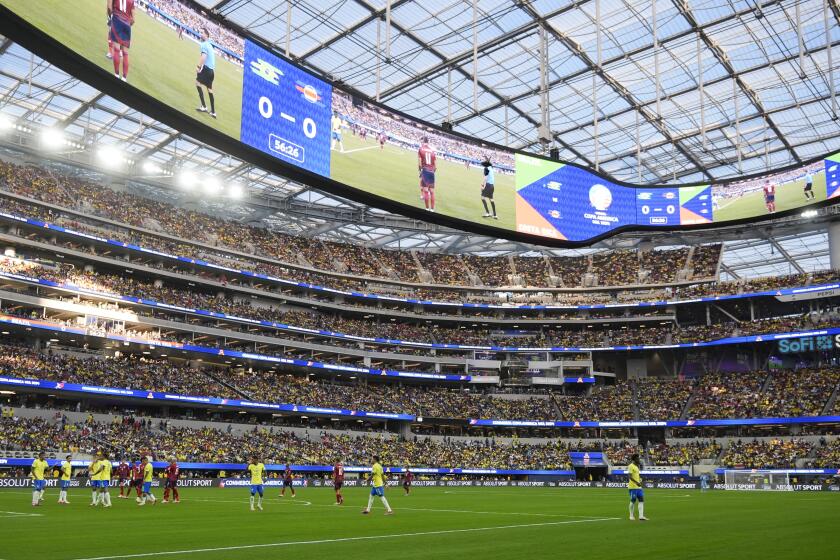SoFi Stadium a terror target? How an ex-Homeland Security Chief caused a Super scare

- Share via
The journey that led to the city of Inglewood hosting a Super Bowl was never going to be neat or linear. Of all the entanglements and absurdities that popped up during these seven years to threaten the timeline — ticking away toward the dreamy endpoint of Sunday’s Super Bowl LVI — there is one which just might stick out above all the others.
Perhaps time has forgotten the curveball thrown by former Homeland Security Chief Tom Ridge in Dec. 2014, back when SoFi Stadium was only a flicker in Rams owner Stan Kroenke’s eye and the NFL could have just as easily returned to Southern California in downtown Los Angeles or the city of Carson.
Ridge, then retired from politics and working as a consultant in the private sector, released a report asserting that a stadium built in Inglewood’s Hollywood Park would become an elevated target for terrorist activity due to its proximity to L.A. International Airport, located about three miles west of the proposed site.
James Butts, the mayor of Inglewood, certainly has not forgotten.
“Preposterous” was the word Butts repeated frequently during a recent interview in his conference room at Inglewood City Hall. When Ridge’s report came up in conversation, Butts naturally defaulted back into the fighter’s pose that fits well with his proud underdog city that has punched its way back onto the world’s stage.
To Inglewood, the matchup between the hometown Rams and Cincinnati Bengals will be much more than a game. It’s a defining moment years in the making, signifying a comeback few could have predicted when the Lakers left the Forum and moved downtown to Staples Center.
And Ridge, the former governor of Pennsylvania and the first U.S. secretary of homeland security, had tried to put an end to all of it.
“As a major American hub for transportation and commerce,” Ridge opined, “it is clear that LAX is attractive to terrorists and other mal-intended actors seeking a target with significant symbolic and economic value.”
Plaschke: Whose House at Super Bowl? With NFL taking over SoFi, it’s up to Rams fans to respond
Rams P.A. announcer Sam Lagana will not be on the mic for Super Bowl LVI because the NFL takes over SoFi Stadium, so fans must chant on their own.
“Likewise,” he continued, “the NFL brand is recognized around the globe for being distinctly American and, for many in the world of sport, an iconic brand. Therefore, placement of the stadium at the Inglewood/Hollywood Park location, would layer existing risk and introduce new risks to an expanded amalgamation of NFL-related stakeholders.”
Ridge called the scenario a “terrorist event twofer,” a proposition that quickly reached the desk of Butts, the former police chief of Santa Monica who worked in public safety with the Los Angeles World Airports.
It would soon come out that Ridge had been hired by AEG, which was competing with Inglewood for the stadium, to analyze the security risks of the Hollywood Park location. AEG’s proposal was to place a stadium called Farmers Field next to Staples Center, its premier venue.
“First of all,” Butts said, “every plane that lands at LAX makes its approach over downtown Los Angeles, right where Farmers Field was scheduled to be. So any danger that was for a stadium to be here in Inglewood should exist for that location as well. So it was clearly a high-school term paper that should have gotten an ‘F.’ ”
While Ridge’s premise was deathly serious, his report’s lack of polish made it surprisingly easy to laugh off. Images of the LAX runways and Hollywood Park were pasted sloppily from Google Earth. Headshots of known terrorists were sprinkled in like clip art. It included a section on the possibility of “laser attacks” that have the potential to blind pilots during landing and takeoff. Using one of his favorite phrases, Ridge, appointed Homeland Security Chief by President George W. Bush two years after the 9/11 attacks, cautioned: “We have watches, but the terrorists have time.”
The report felt light on supporting evidence at just 14 pages, and even Ridge specified that while “not a technical assessment, we have conducted the review and have identified significant macro-level risks. … Based on our experience, we would expect that a more in-depth, all-hazard risk assessment would be completed and it would most likely identify additional concerns.”
Butts would have loved to ignore Ridge’s claims as pure fantasy, but once they went public, he had no choice but to go deeper to refute Ridge and provide the NFL confidence to move forward with Inglewood.
Butts called upon Errol Southers, a counterterrorism expert and security analyst whom Butts had worked with over the years, to create a report that would far surpass the work Ridge had put into his.
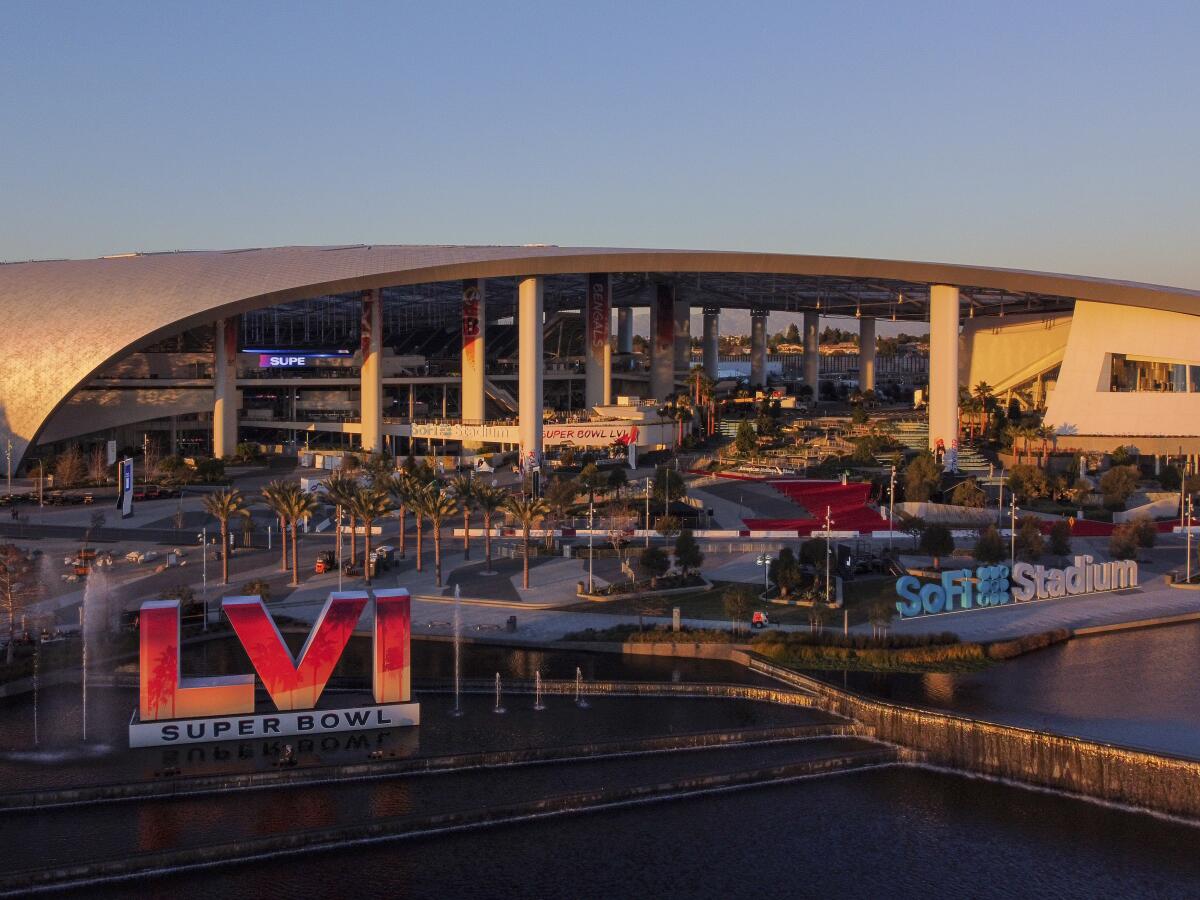
“I remember [Ridge’s] report very vividly,” said Southers, now the director of the Safe Communities Institute at the USC Price School of Public Policy. “It was a 14-page report. What got my attention first of all was that it was a report that was so brief on a project that was so massive. The footprint for what is now SoFi is larger than the footprint for Disneyland.
“It was really zeroing in on its close proximity to LAX but not mentioning there’s 10 other NFL stadiums in the U.S. that have the same proximity to an international airport. So I was trying to understand, why is this airport different in terms of threat?”
Southers interviewed experts from the Federal Aviation Administration, the Department of Homeland Security and pilots, among others. Southers himself had become an expert on stadium security, having consulted during the 2008 Summer Olympics in Beijing.
“We did an all-hazards approach — chemical, biological, radiological, nuclear and explosive incidents, and then we added drones to that,” Southers said. “That resulted in a 100-page document.”
Ridge, who is recovering from a stroke suffered in the fall, declined comment through a spokesman. The Rams and the NFL also chose not to comment.
Southers believes that his research was key in convincing the NFL to pick Inglewood.
Before Stan Kroenke and SoFi Stadium, numerous groups tried to lure the NFL back to Los Angeles by proposing spiffy stadiums. Here’s how some looked.
“Our report was not challenged at all,” he said, “and they got their green light for the stadium with flying colors. We were very proud of that.”
Said Butts, “[AEG] wanted to create confusion and doubt about the viability of the project, and they wanted us to chase our tails.”
Security during a Super Bowl week is a monumental challenge no matter the game location. This will be the first of many chances in the decades to come for Inglewood to prove that Ridge was off in his assessment.
“If a decision is made to move forward at the Inglewood/Hollywood Park site,” Ridge wrote forebodingly, “the NFL, state and local leaders, and those they represent, must be willing to accept the significant risk and the possible consequences that accompany a stadium at the location.”
Sitting in his office on the USC campus last week, Southers was comfortable setting the security stakes for Sunday.
“No pun intended, it’s the Super Bowl, so if you’re a terrorist, it’s the Super Bowl of targets,” Southers said.
“It’s not just any other game. Unfortunately, it’s the Twin Towers. It’s not just another high rise in America. It’s the Pentagon, the seat of our defense department. So it’s iconic, and everybody in the world is watching it. The responsibilities from a security and safety perspective is huge. But, believe me, we’ve got the best people in the country that will be there, making sure nothing happens.”
More to Read
Go beyond the scoreboard
Get the latest on L.A.'s teams in the daily Sports Report newsletter.
You may occasionally receive promotional content from the Los Angeles Times.

